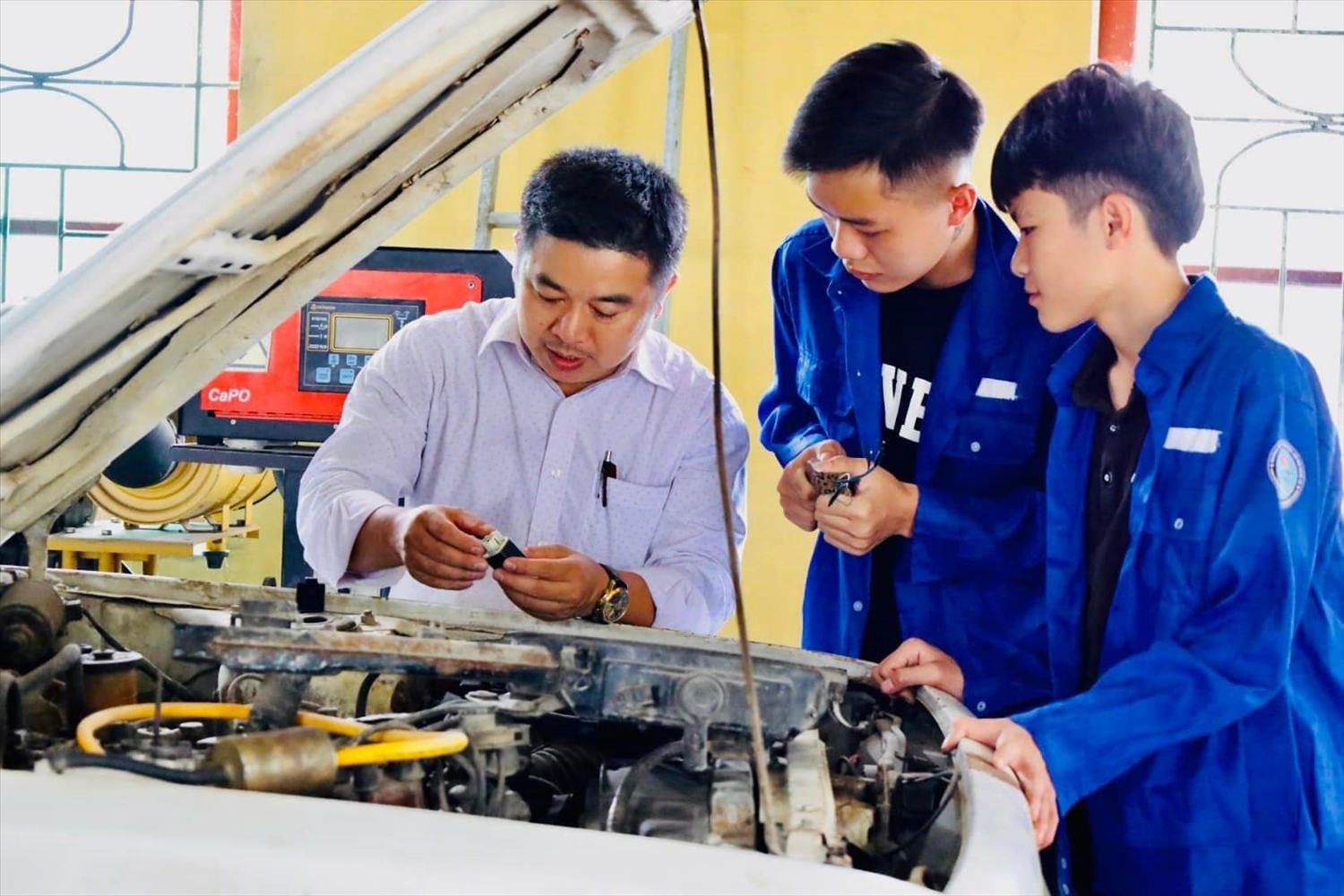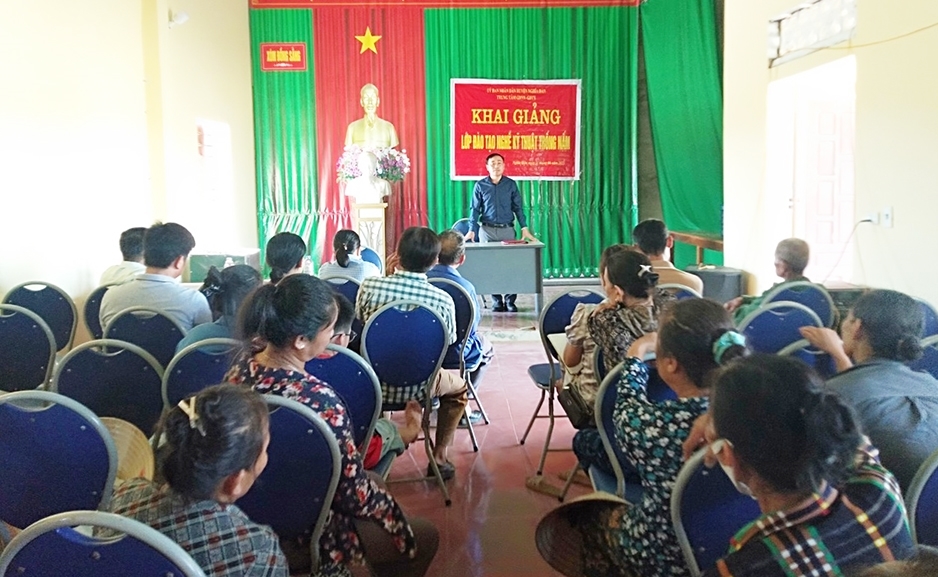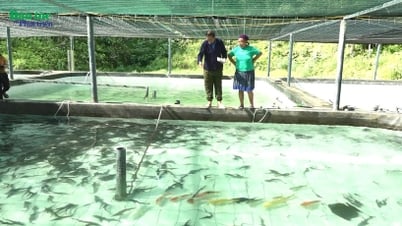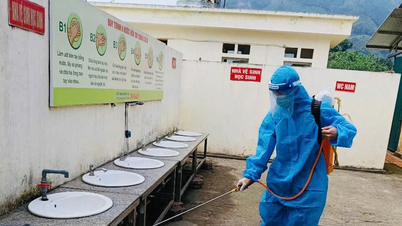
In Quy Hop district, the allocated capital for this content in 2022 - 2023 is equivalent to the ability to open about 110 elementary vocational classes under 3 months. On this basis, the People's Committee of Quy Hop district has assigned each commune to open 2-3 elementary vocational training classes, training under 3 months in 2023. However, the communes have not been able to do so, due to the low demand for vocational training among workers. Not to mention, workers register to study many different occupations, causing difficulties in enrollment and opening teaching classes.
Besides, the infrastructure system and the number of vocational teachers of vocationaleducation and continuing education centers are still lacking compared to regulations. If vocational training classes can be opened, it will be difficult to meet the requirements for teaching.
Another problem is that the Center for Vocational Education - Continuing Education does not have the function of providing vocational training for less than 3 months. Meanwhile, in Quy Hop district, there are no vocational schools for training. To solve the above difficulties and problems, according to the leader of the district's Department of Labor, Invalids and Social Affairs, the department has consulted with vocational schools in the province to coordinate in recruiting and training workers in Quy Hop district, but it has not been implemented because there are no students participating in vocational training.

Located in a remote border area, Ky Son district also cannot disburse all the support capital for vocational training under sub-project 3, under Project 5 of the National Target Program 1719.
In fact, in Ky Son district, the vocational training teachers of the vocational training center - continuing education are not meeting the requirements in terms of quantity and standards, regulations according to current documents. If this difficulty can be overcome by hiring teachers, renting facilities or training cooperation; there is still a difficulty, which is that the demand for vocational training in the communes is low, the majority of learners of working age are working in companies, industrial zones in and outside the province.

To implement vocational training, Thanh Chuong District People's Committee has directed departments and vocational education and continuing education centers to continue to promote and mobilize workers to go to vocational training. However, most workers have learned about livestock and crop farming.
Mr. Lang Van Hoai -, Deputy Chief of Office of Thanh Chuong District People's Committee
Another problem is that the allocated capital is very large, but the unit price for supporting students, the unit price for teacher contracts, the unit price for purchasing raw materials and supplies for training... according to regulations are low but in reality are high, so it is very difficult to implement.
Ky Son is a mountainous district with no factories or industrial zones. Meanwhile, the land and climate are not favorable for the development of a variety of other vocational training occupations; except for the two main training occupations currently being animal husbandry and cultivation. In preserving and promoting the traditional cultural values of the people, there are some small-scale handicraft occupations that can be developed such as bamboo and rattan weaving, brocade weaving, hand embroidery, Mong blacksmithing, etc., but there are no qualified teachers to contract to teach.
Implementing the content of vocational education development and job creation for ethnic minority and mountainous workers, over the past 2 years, Thanh Chuong district has opened 4 vocational training classes and supported job creation for workers.
However, according to Mr. Lang Van Hoai, Deputy Chief of Office of Thanh Chuong District People's Committee, to implement vocational training, Thanh Chuong District People's Committee has directed departments and vocational education - continuing education centers to continue to promote and mobilize workers to go to vocational training. However, most of the workers have learned about livestock and crop farming. Currently, no workers have registered for vocational training, and at the same time, the funding source is too large, while the beneficiaries are few, so the disbursement rate is low and cannot be fully disbursed.

The story of difficulties in implementing vocational training content from the National Target Program 1719 funding source is becoming a "headache" in many localities in Nghe An. According to information from localities, in addition to the lack of vocational students, the demand for vocational training is not high, the system of facilities and the number of vocational teachers are not enough to meet the needs...; it is also necessary to consider whether the quality of vocational training is really attractive to learners or not, whether the training profession has caught up with the current development trend or not...
As long as these problems are slow to be resolved, especially the fact that workers after vocational training cannot make a living from the profession they have learned, the story of difficulty attracting students and difficulty opening vocational training classes in rural areas will continue./.
Source: https://baodantoc.vn/nghe-an-kho-thuc-hien-noi-dung-dao-tao-nghe-theo-chuong-trinh-mtqg-1719-vi-nhieu-cai-thieu-1715071746316.htm



![[Photo] Prime Minister Pham Minh Chinh and Prime Minister of the Kingdom of Thailand Paetongtarn Shinawatra attend the Vietnam-Thailand Business Forum 2025](https://vphoto.vietnam.vn/thumb/1200x675/vietnam/resource/IMAGE/2025/5/16/1cdfce54d25c48a68ae6fb9204f2171a)

































![[Photo] President Luong Cuong receives Prime Minister of the Kingdom of Thailand Paetongtarn Shinawatra](https://vphoto.vietnam.vn/thumb/1200x675/vietnam/resource/IMAGE/2025/5/16/52c73b27198a4e12bd6a903d1c218846)

























































Comment (0)